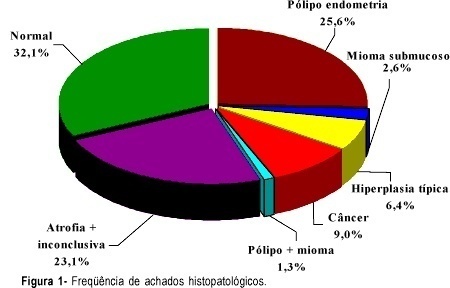Revista Brasileira de Ginecologia e Obstetrícia. 2003;25(4):237-241

PURPOSE: to investigate the accuracy of hysteroscopy as a method for the evaluation of the uterine cavity in women with postmenopausal bleeding. METHODS: a cross-sectional study that consisted of the evaluation of 78 women with postmenopausal bleeding submitled to histeroscopy and directed biopsy in the period from January 2000 to June 2002 in the Bahia State Oncology Center. Hysteroscopy findings were classified as benign (leiomyoma, polyp, atrophy, normal) and suspect (hyperplasia, thickening, cancer) and the histopathologic findings as benign (leiomyoma, polyp, non-atypical hyperplasia, atrophy) and malignant (cancer and atypical hyperplasia). The results of hysteroscopy were compared with the pathologic findings. RESULTS: in relation to the suspect results (thickening, hyperplasia and cancer) hysteroscopy sensitivity and specificity were 85.7 and 88.7%, respectively. Positive and negative predictive values were 42.83 and 98.4%. Likelihood ratios of positive and negative tests were 7.6 and 0.16. Accuracy was 88.4% and kappa index, 0.5. CONCLUSION: hysteroscopy alone did not show an acceptable accuracy in the study, reinforcing the idea that its main advantage is to direct the biopsy, and it must always be associated with the histological diagnosis.
Search
Search in:


Comments